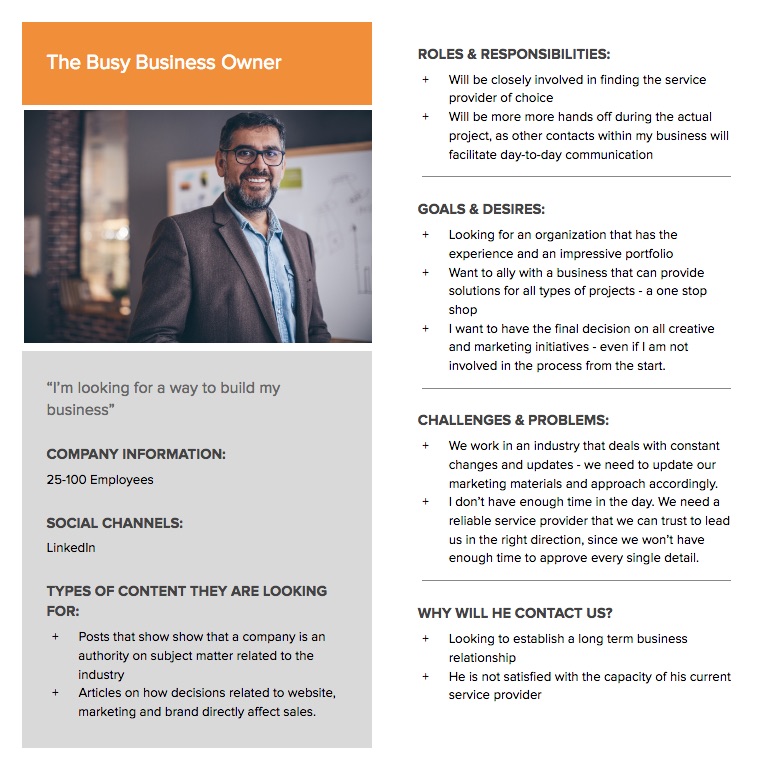
You’ve built a website that looks great. It loads quickly, has tons of compelling content, a slick user interface paired with imagery and a colour palette that is on point.
With an immense sense of self-satisfaction, you launch the website aaaaaand…
*crickets chirping*
What the hell happened?
Well, it turns out that there’s a small but important difference between building an excellent website and building an excellent website that actually solves the user’s problems.
And one of the best ways to keep crickets from infesting your newly-built website is to start your web project by developing user personas to outline who your customers are and what they are looking for.
Selling a solution
When building a website for your business, the goal isn’t to create something that designers would love to click through—it’s to make a website that resonates with the customers and help address their needs.
Simply put, a customer will buy a product if it solves their problem. The user persona helps us to understand customer’s problem, which we can then use to find the solution they’re looking for.
Every person that visits your website is unique in their own way. But with some investigative work, you can group their different motivations and needs into a number of distinct personalities. These new fictional personalities are user personas.
In order to tell each persona apart, they are typically given a name. So, for example, the Project Manager who is looking for a product to help with communications becomes “Gary” and the IT Specialist who wants to improve efficiencies becomes “Jessica”.
By identifying the nuances of what will convince Gary to buy a product and how that differs from Jessica, we can begin to make a truly personalized user experience.
What’s the point of user personas?
Creating user personas keeps the entire team grounded and ensures that everyone is working towards the same goal of satisfying the needs and expectations of the customers.
There are a lot of moving parts in a website project. Different people in different roles are building different sections of the website to appeal to different target audiences. Without having user personas to fall back on, everything can become a discombobulated mess.

A reflection of reality
Key Point: It’s important to validate that your user personas are actually reflective of reality.
This can be done via a survey of existing customers through facilitated focus groups or collected testimonials and feedback, or other real-life experiences. The more data you have, the more certain you can be that your user personas are on target.
Without taking time to collect actual customer information you can end up building a product that makes a lot of assumptions. Building an entire website based on assumptions can quickly become a problem if those assumptions fall apart.
Once the first drafts of your user personas are complete, it’s important to take a step back to consider and even challenge what you have created. Are the personas accurate? Do they capture all the target groups, or is one missing?
Since the persona is foundational to everything that follows, it’s worth it to get it right so that your website investment pays dividends!
